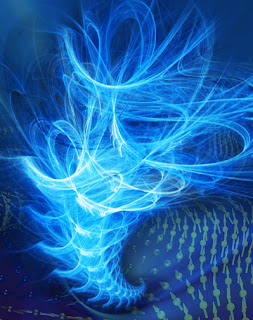

| Visitors Now: | |
| Total Visits: | |
| Total Stories: |

| Story Views | |
| Now: | |
| Last Hour: | |
| Last 24 Hours: | |
| Total: | |
Magnonics is an extension of spintronics and relate to helix magnetism
From
Magnonics is an exciting extension of spintronics, promising novel ways of computing and storing magnetic data. What determines a material’s magnetic state is how electron spins are arranged (not everyday spin, but quantized angular momentum). If most of the spins point in the same direction, the material is ferromagnetic, like a refrigerator magnet. If half the spins point one way and half the opposite, the material is antiferromagnetic, with no everyday magnetism.
There are other kinds of magnetism. In materials where the electrons are “itinerant” – moving rapidly through the crystal lattice like a gas, so that their spins become strongly coupled to their motions – certain crystalline structures can cause the spins to precess collectively to the right or left in a helix, producing a state called helimagnetism.
Helimagnetism most often occurs at low temperature; increasing the heat collectively excites the spin structure and eventually destroys the order, relaxing the magnetism. In quantum calculations, such collective excitations are treated like particles (“quasiparticles”); excitations that disrupt magnetism are called magnons, or spin waves. There is a well developed theory of helimagnons, yet little is known experimentally about how helimagnetism forms or relaxes on time scales of less than a trillionth of a second, the scale on which magnetic interactions actually occur.
See more and subscribe to NextBigFuture at 2012-12-20 01:03:03 Source: http://nextbigfuture.com/2012/12/magnonics-is-extension-of-spintronics.html
Source:



